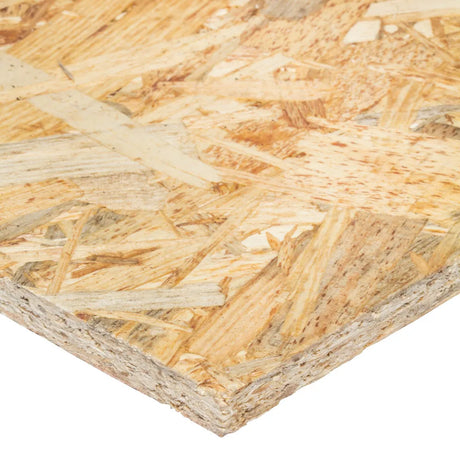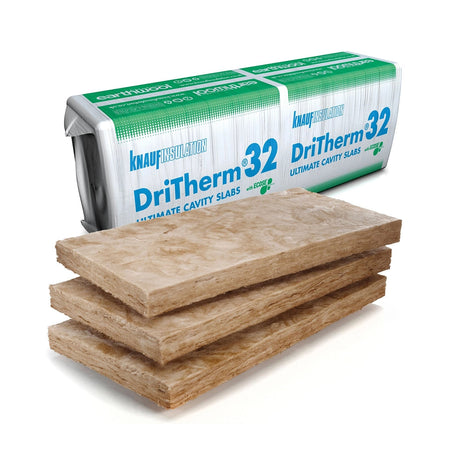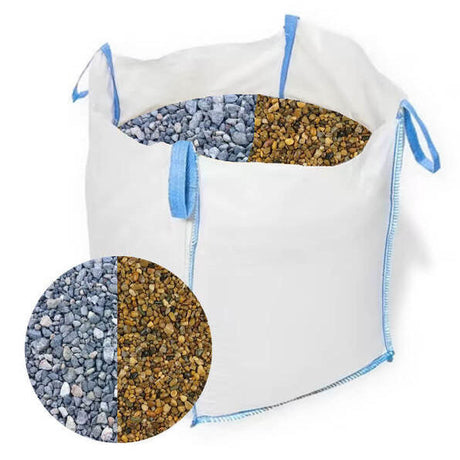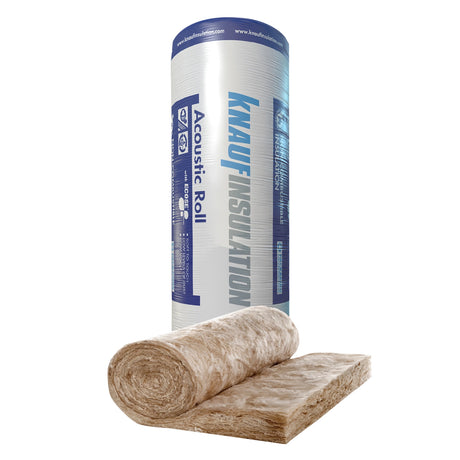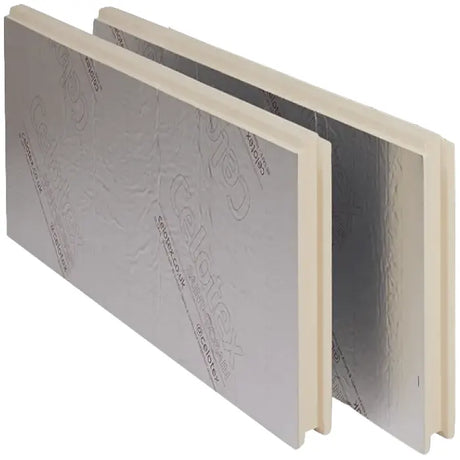When it comes to creating stunning outdoor buildings that stand the test of time, timber cladding remains the gold standard for British homeowners and trade professionals alike. The warm, natural appearance of wood brings an authentic charm to any garden space, whilst providing the essential protection your structure needs against our unpredictable climate. Whether you're planning a traditional garden shed, a contemporary home office pod, or a multi-purpose workshop, timber cladding offers the perfect marriage of aesthetic appeal and practical performance.
Pressure-treated timber cladding takes this tried-and-tested approach one step further, offering enhanced protection against the elements whilst maintaining all the visual appeal that makes timber such a beloved choice. In our experience at DIY Building Supplies, we've seen countless projects transformed by the right choice of cladding, and pressure-treated options consistently deliver exceptional results for outdoor applications. The natural grain patterns and warm tones of quality timber create buildings that feel perfectly at home in any garden setting, from rural countryside properties to urban back gardens.
This comprehensive guide explores why pressure-treated timber cladding represents such a smart investment for your outdoor building project. We'll examine the technical advantages that make it superior to untreated alternatives, share practical installation insights gained from years of supporting both DIY enthusiasts and professional tradespeople, and provide expert guidance on maintaining your cladding for decades of reliable performance. At DIY Building Supplies, we're committed to helping you achieve outstanding results, and choosing the right cladding materials forms the foundation of any successful outdoor building project.
Understanding Pressure-Treated Timber Cladding: Science Meets Craftsmanship
Pressure-treated timber cladding represents a sophisticated marriage of traditional woodworking and modern preservation technology. The pressure-treatment process involves placing timber in a sealed cylinder where preservative chemicals are forced deep into the wood fibres under high pressure, typically around 150 PSI. This intensive process ensures that protective agents penetrate throughout the timber's structure, rather than simply coating the surface as with brush-applied treatments. The result is timber that maintains its natural beauty whilst gaining remarkable resistance to the biological threats that typically compromise outdoor wood structures.
The preservatives used in modern pressure-treatment are carefully formulated to target the specific challenges facing outdoor timber in the UK climate. These treatments create an inhospitable environment for wood-destroying fungi, which thrive in our damp conditions and cause the rot that can devastate untreated timber structures. Simultaneously, the chemicals deter wood-boring insects such as woodworm and carpenter ants, which can cause significant structural damage over time. Leading UK suppliers like Jewson and Travis Perkins work with processors who use advanced copper-based preservative systems that provide excellent protection whilst remaining environmentally responsible.
The base timber for pressure-treatment typically consists of sustainably sourced softwoods, with Scandinavian redwood and British-grown Scots pine being particularly popular choices. These species offer the ideal combination of affordability, workability, and preservative uptake, making them perfect for transformation into high-performance cladding materials. The cellular structure of these softwoods allows preservatives to penetrate effectively, whilst their natural strength characteristics ensure excellent structural performance once treated. Modern pressure-treated cladding is available in numerous profiles, from traditional shiplap and featheredge designs to contemporary tongue-and-groove systems, ensuring there's an option to suit every architectural style and personal preference.
The Compelling Benefits of Pressure-Treated Timber for Outdoor Projects
Natural Aesthetic Appeal That Enhances Any Setting
The visual impact of quality timber cladding cannot be overstated, and pressure-treated options deliver all the natural beauty you'd expect from premium wood products. The rich grain patterns characteristic of Scandinavian redwood create visual interest and depth, whilst the warm, honey-coloured tones complement virtually any garden setting. Unlike artificial alternatives, timber cladding ages gracefully, developing character over time as it weathers naturally. This organic evolution means your building will become increasingly integrated with its surroundings, creating the authentic, established appearance that's impossible to achieve with synthetic materials.
One of the greatest advantages of timber cladding lies in its versatility regarding finishes and treatments. Fresh pressure-treated timber provides an excellent foundation for staining, where translucent wood stains from manufacturers like Ronseal or Cuprinol can enhance the natural grain whilst adding your preferred colour tone. Alternatively, opaque paints offer unlimited colour possibilities, allowing you to create bold statements or subtle tones that complement your existing garden features. Perhaps most appealingly, many homeowners choose to leave their pressure-treated cladding completely natural, allowing it to weather to an attractive silver-grey patina that epitomises the relaxed, organic aesthetic so popular in contemporary garden design.
The thermal properties of timber cladding also contribute significantly to the comfort and usability of garden buildings. Wood's natural insulating qualities help regulate internal temperatures, keeping garden rooms cooler in summer and warmer in winter compared to metal-clad alternatives. This thermal performance extends the usable season for garden offices and workshops, whilst reducing condensation issues that can affect stored items in sheds and storage buildings. The sound-dampening properties of timber cladding also create more pleasant working environments in garden offices, reducing external noise whilst preventing internal sounds from disturbing neighbours.
Built-In Protection Against Rot and Insect Damage
The enhanced durability of pressure-treated timber becomes particularly valuable in the challenging conditions faced by outdoor buildings in the UK. Our climate's combination of high humidity, frequent rainfall, and temperature fluctuations creates ideal conditions for wood-destroying fungi, which can rapidly compromise untreated timber structures. Pressure-treated cladding's deep preservative penetration creates a robust barrier against these biological threats, significantly extending the service life of your outdoor building whilst reducing maintenance requirements and associated costs.
The preservative systems used in modern pressure-treatment are specifically formulated to address the full spectrum of biological threats facing outdoor timber. Copper-based preservatives excel at preventing fungal attack, whilst additional biocides target wood-boring insects that can cause hidden structural damage. This comprehensive protection approach means pressure-treated cladding continues performing effectively even in areas of high exposure, such as north-facing walls that remain damp for extended periods, or coastal locations where salt spray can accelerate degradation of unprotected materials.
Independent testing consistently demonstrates the superior performance of pressure-treated timber compared to untreated alternatives. Research conducted by the Timber Research and Development Association shows that properly pressure-treated softwood cladding can achieve service lives of 15-25 years or more in external applications, compared to just 3-7 years for untreated timber in similar conditions. This dramatic improvement in longevity makes pressure-treated cladding an economically sound choice, as the modest additional upfront cost is quickly offset by reduced replacement and maintenance expenses over the building's lifetime.
Exceptional Structural Performance and Weather Protection
Beyond its aesthetic and preservation benefits, pressure-treated timber cladding provides excellent structural performance that enhances the overall integrity of your outdoor building. The cladding system acts as the primary weather shield, protecting underlying structural elements from direct exposure to rain, wind, and UV radiation. Properly installed timber cladding creates an effective barrier against water penetration whilst allowing the building structure to breathe, preventing the moisture accumulation that can lead to structural problems and internal damp issues.
The dimensional stability of quality pressure-treated cladding contributes significantly to long-term performance and appearance retention. Premium suppliers work with timber that's been properly kiln-dried before treatment, ensuring moisture content levels that minimise subsequent movement and warping. This attention to initial processing quality pays dividends in terms of installation ease and long-term appearance, as stable cladding maintains clean, straight lines and tight joints that enhance both weather protection and visual appeal.
Modern pressure-treated cladding systems also offer excellent compatibility with contemporary building techniques and materials. The cladding can be effectively combined with breathable membranes, insulation systems, and vapour barriers to create high-performance building envelopes that meet current thermal and moisture management standards. This compatibility makes pressure-treated timber cladding an excellent choice for contemporary garden rooms and home offices, where occupant comfort and energy efficiency are important considerations alongside traditional durability requirements.
Cost-Effective Solutions for DIY and Professional Projects
The economic advantages of pressure-treated timber cladding extend beyond its excellent longevity to encompass every aspect of the project lifecycle. Initial material costs remain highly competitive compared to alternative cladding options, particularly when the extended service life is factored into value calculations. Unlike composite or metal alternatives that often require specialised fixings and installation techniques, timber cladding can be installed using standard carpentry tools and techniques, making it accessible to DIY enthusiasts whilst reducing labour costs for professional installations.
The widespread availability of pressure-treated cladding through established suppliers like Wickes, B&Q, and specialist timber merchants ensures competitive pricing and reliable supply chains. Standard profiles and lengths are manufactured to meet common building requirements, reducing waste and simplifying ordering for both small DIY projects and larger commercial installations. The modularity of timber cladding systems also allows for easy repairs and modifications, should damage occur or design changes be required in the future.
Professional tradespeople particularly appreciate the workability of pressure-treated timber cladding, which cuts, shapes, and fixes easily using conventional tools and techniques. This ease of installation translates into reduced labour costs and faster project completion times, making it an economically attractive option for garden building contractors and maintenance professionals. The ability to achieve professional-quality results without specialised equipment or extensive training makes pressure-treated timber cladding an ideal choice for expanding businesses or tradespeople taking on new types of projects.
Optimal Applications for Pressure-Treated Timber Cladding
Garden Sheds: Combining Practicality with Natural Beauty
Traditional garden sheds represent perhaps the most popular application for pressure-treated timber cladding, and for excellent reasons. The robust protection offered by pressure-treatment ensures these essential garden buildings can withstand decades of exposure to British weather whilst maintaining their structural integrity and visual appeal. Whether you're storing valuable garden equipment, workshop tools, or seasonal items, pressure-treated cladding provides the weather protection necessary to keep contents dry and secure whilst creating an attractive focal point in your garden landscape.
The versatility of timber cladding profiles allows garden sheds to complement any architectural style, from traditional cottage gardens to contemporary urban spaces. Horizontal shiplap cladding creates the classic shed aesthetic that many homeowners prefer, whilst vertical board-and-batten arrangements offer a more contemporary appearance that works particularly well with modern garden designs. The ability to customise the finish through staining or painting means your shed can either blend discretely into the background or serve as an attractive feature building, depending on your garden design goals.
Modern garden sheds often serve multiple purposes beyond simple storage, functioning as workshops, hobby spaces, or even temporary offices during garden parties and outdoor events. Pressure-treated timber cladding's excellent thermal properties and sound-dampening characteristics make these buildings more comfortable and usable throughout the year. The natural breathability of timber construction also helps prevent the condensation issues that can affect stored items in poorly ventilated buildings, protecting valuable tools and equipment from moisture damage.
Garden Rooms and Home Offices: Professional Spaces with Natural Warmth
The growing trend towards remote working has dramatically increased demand for high-quality garden offices and multipurpose garden rooms. Pressure-treated timber cladding provides the perfect solution for these applications, offering the professional appearance necessary for business use whilst maintaining the natural warmth and character that makes these spaces genuinely pleasant to occupy. The acoustic properties of timber cladding help create quiet, focused working environments that feel separate from the main house whilst remaining conveniently accessible.
Contemporary garden room designs often feature large glazed areas to maximise natural light and garden views, making the choice of cladding material particularly important for overall aesthetic success. Timber cladding provides the perfect counterpoint to extensive glazing, adding visual weight and natural texture that prevents buildings from appearing stark or commercial. The ability to specify different profiles and finishes allows architects and homeowners to create sophisticated elevational compositions that enhance both the building and its garden setting.
The thermal performance of pressure-treated timber cladding becomes particularly valuable in garden office applications, where year-round comfort is essential for productive working. When combined with appropriate insulation systems, timber-clad garden rooms can achieve excellent thermal efficiency whilst maintaining the breathable construction characteristics that prevent humidity and condensation problems. This natural regulation of internal conditions creates healthier, more comfortable working environments compared to many alternative construction approaches.
Workshops and Storage Buildings: Durability for Demanding Applications
Professional workshops and dedicated storage buildings place particular demands on cladding systems, requiring exceptional durability combined with easy maintenance and repair capabilities. Pressure-treated timber cladding excels in these demanding applications, providing robust protection against impact damage whilst maintaining the flexibility to accommodate building movement and thermal expansion. The natural shock-absorbing properties of timber help prevent damage from accidentally dropped tools or materials, whilst the ease of local repairs means minor damage can be addressed quickly and economically.
The chemical resistance of modern pressure-treated timber makes it suitable for workshops where various substances may come into contact with building surfaces. Unlike metal cladding systems that can suffer from corrosion in challenging environments, timber cladding maintains its integrity when exposed to workshop conditions, whilst any surface contamination can typically be removed through simple cleaning or light sanding and refinishing.
Large storage buildings and commercial workshops often benefit from the dimensional flexibility offered by timber cladding systems. The modular nature of timber cladding allows for easy incorporation of access doors, ventilation panels, and service penetrations without compromising weather protection or structural integrity. This adaptability makes timber-clad buildings particularly suitable for evolving business requirements, where modifications and extensions may be needed as operations develop and expand.
Professional Installation Techniques for Outstanding Results
Strategic Planning for Optimal Performance
Successful pressure-treated timber cladding installation begins with careful planning that considers both immediate installation requirements and long-term performance factors. The orientation of cladding boards significantly influences both appearance and weather performance, with horizontal installations generally providing superior water shedding characteristics whilst vertical arrangements can create striking contemporary aesthetics. At DIY Building Supplies, we recommend considering your building's exposure conditions, architectural style, and personal preferences when making this fundamental decision.
The selection of appropriate fixings represents another critical planning consideration that directly impacts long-term performance and appearance. Stainless steel or hot-dipped galvanised screws and nails prevent the unsightly staining that can occur when ferrous metals react with preservative chemicals in treated timber. Quality fixings from suppliers like Simpson Strong-Tie or Spax not only eliminate staining issues but also provide superior holding power that maintains cladding security throughout the seasonal movement cycles that affect all timber buildings.
Proper substrate preparation forms the foundation of any successful cladding installation, requiring attention to both structural adequacy and moisture management details. The incorporation of breathable membranes behind the cladding creates an effective secondary weather barrier whilst allowing moisture vapour to escape from the building structure. Leading manufacturers like Tyvek and Klober produce membranes specifically designed for timber cladding applications, offering the optimal balance of weather protection and vapour permeability essential for long-term performance.
Installation Best Practices for Professional Results
The physical installation of pressure-treated timber cladding requires attention to numerous technical details that collectively determine the quality and longevity of the finished installation. Maintaining consistent spacing between boards allows for the thermal expansion and contraction that naturally occurs with changing temperatures and humidity levels. This movement accommodation prevents the buckling and distortion that can occur when timber is installed too tightly, whilst ensuring adequate ventilation behind the cladding that promotes drying and prevents moisture accumulation.
Starting the installation with a perfectly level baseline ensures the entire cladding system appears straight and professional, regardless of any minor irregularities in the underlying structure. The use of quality chalk lines and laser levels helps achieve the precision necessary for outstanding visual results, whilst careful attention to corner details and terminations creates the clean, finished appearance that distinguishes professional installations from amateur attempts.
The treatment of cut ends represents a critical aspect often overlooked by inexperienced installers. Pressure-treated timber's protection can be compromised at cut surfaces where the preservative penetration may be incomplete. Applying appropriate end-grain sealers or additional preservative treatment to all cut surfaces ensures continued protection and prevents the localised decay that can compromise the entire cladding system. Quality end-grain treatments from manufacturers like Sadolin or Barrettine provide effective protection that maintains the warranty coverage offered by pressure-treated timber suppliers.
Quality Control and Final Details
Professional-quality cladding installations require systematic quality control throughout the installation process, ensuring each board is properly secured and correctly aligned before proceeding to the next course. The use of appropriate spacers or gauges helps maintain consistent reveals between boards, creating the uniform appearance that characterises high-quality work. Regular checking with levels and measuring tools prevents the accumulation of small errors that can result in noticeable alignment issues in the completed installation.
The integration of trim pieces and finishing details requires particular attention to both aesthetic and functional considerations. Quality timber trim from the same treatment batch as the main cladding ensures colour matching whilst providing the clean edge details essential for professional appearance. The proper sealing of trim joints prevents water penetration that could compromise the underlying structure, whilst careful attention to expansion gaps ensures the trim system accommodates natural timber movement without buckling or splitting.
Final inspection should encompass both visual appearance and functional performance aspects, checking for proper water shedding, secure fixing, and overall alignment. Any minor adjustments needed should be completed before considering the installation finished, as addressing issues during installation is significantly easier than remedial work after completion. The application of any specified finishes or treatments should follow manufacturer recommendations to ensure optimal performance and maintain warranty coverage.
Maintenance and Care: Protecting Your Investment
Understanding Maintenance Requirements
One of the most compelling advantages of pressure-treated timber cladding lies in its relatively modest maintenance requirements compared to untreated alternatives. The deep preservative penetration achieved through pressure-treatment provides ongoing protection that doesn't rely on surface coatings or frequent reapplication of treatments. However, like any exterior building material, pressure-treated cladding benefits from periodic inspection and basic maintenance that helps maximise its service life and maintain its appearance.
The natural weathering process of pressure-treated timber creates an attractive silver-grey patina that many homeowners find appealing, requiring no intervention to maintain. This weathered appearance develops gradually over 12-18 months of exposure, creating the relaxed, natural aesthetic that makes timber cladding so popular for garden buildings. For those who prefer to maintain the original colour or apply custom finishes, the stable base provided by pressure-treatment makes it an excellent substrate for stains, paints, and other decorative treatments.
Regular inspection, ideally conducted annually or after severe weather events, allows early identification of any issues that might require attention. These inspections should focus on checking for loose fixings, damaged boards, or areas where debris accumulation might be preventing proper drainage. The modular nature of timber cladding systems means individual damaged boards can typically be replaced without affecting the entire installation, making maintenance both economical and straightforward.
Cleaning and Refreshing Techniques
Maintaining the appearance of pressure-treated timber cladding requires only basic cleaning techniques using readily available materials and equipment. Annual washing with a mild detergent solution removes accumulated dirt, algae, and atmospheric pollutants that can dull the timber's appearance. A soft-bristled brush or low-pressure washer effectively removes surface contamination without damaging the timber or removing protective treatments, whilst ensuring adequate rinsing prevents detergent residues that might promote biological growth.
In areas prone to algae or moss growth, particularly on north-facing elevations or shaded locations, periodic treatment with appropriate biocides helps maintain clean, attractive surfaces. Products specifically designed for timber applications, such as those manufactured by Bayer or Lonza, provide effective biological control without compromising the underlying preservative protection. These treatments are particularly valuable in coastal areas or locations with high humidity where biological growth can be persistent.
For cladding that has been stained or painted, refresh treatments every 3-5 years help maintain optimal appearance and provide additional surface protection. The excellent stability of pressure-treated timber creates an ideal substrate for refinishing work, with minimal surface preparation typically required beyond basic cleaning and light sanding of high-wear areas. Quality exterior wood stains from manufacturers like Sadolin or Sikkens provide excellent durability and appearance retention when applied over properly prepared pressure-treated surfaces.
Long-Term Performance Optimisation
Maximising the service life of pressure-treated timber cladding involves understanding and working with the natural characteristics of timber rather than fighting against them. Ensuring adequate ventilation behind the cladding allows natural drying cycles that prevent moisture accumulation, whilst maintaining clear drainage paths prevents water ponding that could accelerate weathering. Simple measures such as keeping vegetation trimmed back from cladding surfaces and ensuring gutters and downpipes function properly contribute significantly to long-term performance.
The replacement of individual damaged boards represents one of the key maintenance advantages of timber cladding systems. Unlike monolithic cladding materials that require extensive work to repair localised damage, timber boards can be individually removed and replaced with minimal disruption to surrounding areas. Keeping a small stock of matching boards allows immediate repair of any damage, preventing minor issues from developing into more significant problems.
Professional assessment every 10-15 years helps identify any systemic issues that might require attention, whilst providing an opportunity to consider upgrades or modifications that could enhance performance or appearance. The modular nature of timber cladding makes it relatively straightforward to incorporate improvements such as additional insulation, updated vapour barriers, or enhanced ventilation systems during major maintenance cycles, ensuring your building continues meeting current performance standards throughout its service life.
Making the Right Choice: Pressure-Treated Timber for Lasting Success
Pressure-treated timber cladding represents the perfect synthesis of natural beauty, proven performance, and practical affordability that makes it the ideal choice for discerning homeowners and professional builders alike. The combination of traditional timber aesthetics with enhanced protection against biological threats creates a cladding solution that delivers exceptional value throughout its extended service life. Whether you're planning a simple garden shed or an sophisticated home office complex, pressure-treated timber cladding provides the weather protection, visual appeal, and long-term reliability essential for outstanding results.
The technical advantages of pressure-treatment become particularly compelling when viewed in the context of total project costs and long-term ownership expenses. The modest additional investment required for pressure-treated materials compared to untreated alternatives delivers dramatic improvements in service life and performance reliability, making it an economically sound choice for any outdoor building project. When combined with professional installation techniques and basic maintenance practices, pressure-treated timber cladding can provide decades of reliable service whilst maintaining its attractive appearance and structural integrity.
At DIY Building Supplies, we've built our reputation on providing expert guidance and premium materials that help our customers achieve outstanding results in every project. Our comprehensive range of pressure-treated timber cladding options includes profiles and specifications suitable for every application, from traditional garden buildings to contemporary architectural projects. Our technical support team combines extensive practical experience with detailed product knowledge, ensuring you receive the guidance necessary to select optimal materials and achieve professional-quality results.
Ready to transform your outdoor space with premium pressure-treated timber cladding?
Discover our comprehensive selection of pressure-treated timber cladding, battens, and accessories at DIYBuildingSupplies.co.uk. Our expert team is ready to help you select the perfect materials for your project and provide the technical support you need for outstanding results.
Contact our specialists today for personalised advice on your specific requirements, detailed quotations, and professional guidance that ensures your project's success from planning through completion.



